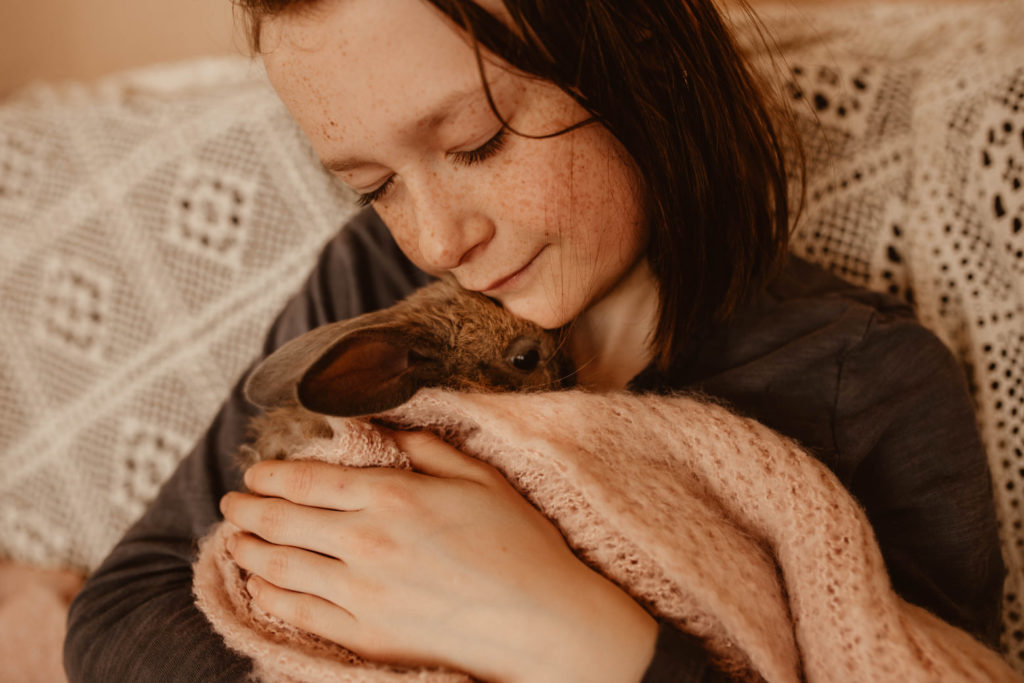At this time, my own daughters are still children. You need to know that I have not helped any of my own daughters place a child for adoption – but I have helped someone else’s daughter on this journey. It was a privilege, an honor, and also quite a responsibility. The first thing to consider when helping your daughter place her child for adoption is the weight of the situation, the sacredness of the decision, and your role as a helper.
If your daughter has made a decision to place her baby for adoption, you might be dealing with many emotions on your own part. It is very important, if you are going to be able to help your daughter, that you can deal with your own processing of grief. You might grieve the loss of becoming a grandparent. You will probably grieve the loss of this child, your connectedness, and what might have or could have been, in your mind. And that is ok. It is to be expected, but your grief cannot flow out onto your daughter. Your daughter is already making one of the biggest decisions she will make in her life, and she should not be made to feel guilt over how others around her are feeling. She cannot control how you feel, and it isn’t her responsibility. If you are having problems with your emotions, if they feel out of control, if you can’t stop crying – it is time to talk to a counselor, preferably one who has adoption experience. Grandparents don’t often come to mind immediately when we talk about adoption, but they are just as prone to grief in the process as any other part of the extended triad (birth parent/child/adoptive parent – adding in extended family, grandparents, cousins, aunties and uncles, anyone who would have had a connection with the child after birth). A book that is quite helpful is “Affirming the Birth Mother’s Journey: A Peer Counselor’s Guide to Adoption Counseling?” by Wendy Lowe and Jutta Wittmeier, with Carmen Wittmeier. This book is full from cover to cover with case studies and accounts of real birth mothers. It is honest, open, and raw. It gives incredible insight from many different angles and will help you think about ways to be supportive.

If you are going to help your daughter place her baby for adoption, you need to think about guiding rather than controlling. As parents, we often see many options in front of our children, and we want things to go well for them. As children get closer to adulthood, and into adulthood, we need to step back into a guiding role, and even an advisory role; making decisions for our children is no longer something we should be doing. Perhaps your daughter is looking to you at this time to make decisions – if that is the case, she needs to be actively involved, as much as she is able so that there are no regrets later on. If she is struggling immensely to make decisions, and if she is willing, it would be great if she could see a counselor or perhaps speak to someone else who made an adoption plan for their child. Involve your daughter at every step because this is her journey. Listen to her. Be ready to help with practical things, such as paperwork and running errands, but let her take the reins at every turn possible. Be a sounding board, full of grace, and without judgment. She is probably feeling judgment from many people around her; as her parent, don’t let her feel judgment from you. Unconditional love, now, is so important.
Once you have gotten your own emotions in check, and once you have found your role as a guide and helper rather than a controller, it is time to get to work. And now, a question: IS your daughter planning to place her child for adoption? Many women go back and forth between parenting and making an adoption plan. This decision is absolutely not to be taken lightly, and as hard as it can be for loved ones around an expectant mother, she cannot be rushed. She should not be guilted or shamed one way or another, and she should be supported through consistent, open conversation. Let her talk, and let her talk often. Answer her questions. If you don’t have answers, wonder with her, and think about who might have answers. If your daughter is still in the exploration stage, thinking about her options, you could arrange for her to talk with an adoption agency, an adoption social worker, a pregnancy care center, an adoptive family if you know one (for some perspective), an adoptee, and a birth mom who has placed a child for adoption. Let her cry, storm, and ruminate. She might state she has made a final decision – she might change that final decision many more times. Be patient. This is her struggle to sort out.
The birth father might be absent. He might be indifferent. Or, he might be insistent. Your daughter and the birth father might not agree on what plan should be made. If this is the case, do not get in the middle, unless you feel that someone is at risk or unsafe. As much as you might want to referee, or make your opinion known, this is something that the birth parents need to come to terms with, together. If they are willing, a counselor might be able to help. This might be painful for you to watch. There might be harsh words or indifference that cuts you, as a parent, to your core. Steady on—keep yourself in check, and remind yourself that you are here as a support to your daughter and that an emotional tirade from you will not help the situation. If you’re a person of prayer, now is the time.
Once your daughter has definitely made the decision to place her baby for adoption, you can start working towards the next steps. She might still waver, or feel unsure at times, and this is ok. Many provinces in Canada have rules about birth parents not being able to sign adoption-related paperwork until the newborn baby is 10 days old, allowing the birth parents time to think and be sure. On top of that, any decision to place for adoption can be reversed up to 30 days after the baby is born. While this is a terrifying thought for the adoptive family, this is in place for the protection of the birth parents. It helps ensure coercion is not happening, and it allows the birth mom time to be sure.
After the decision to place for adoption is made, birth parents need to decide if they will use an adoption agency, where they will pick a family from a number of profiles, or if they will choose someone they know, and place through a direct placement adoption. Both routes ensure a safe, legal adoption through the court and legal system. Adoptions are legally complicated, and for good reason: to ensure that the family adopting is safe and has had a background check, to make sure all legal documents are handled properly for the child and adoptive family, and to ensure the birth parents aren’t being coerced. It is illegal to broker children – it is important for you, as the grandparent, to know that no one should be offering you money to help find a good home, offering matchmaking services, or offering payment to be chosen as the adoptive family. This is illegal. Agencies and adoption social workers are required in all adoptions to ensure birth families, children of adoption, and adoptive families are not being taken advantage of.
If your daughter chooses to use an adoption agency, shop around. See if one feels more inviting to her. Adoption agencies should be licensed, transparent, and above all else, friendly and good to work with. At this time in your daughter’s life, she does not need to be working with a forgetful, uninterested, rude, or otherwise unsavory agent or social worker. Move on. Birth mothers should not have to pay any fees to place their child for adoption, and may, in some places, be eligible for financial help for medical and travel expenses via the adoptive family. Your social worker or lawyer will determine and outline what is allowed, including gifts, and what is not allowed. When in doubt, ask your agency or adoption social worker.
It can feel a little bit like the clock is ticking, and that your daughter must choose a family from the profiles of those seeking to adopt, and choose quickly. Don’t rush her. This is such an important decision, and she needs to take her time. If your daughter has chosen a direct placement adoption, she must know the person or couple she has chosen, already. Direct placement adoptions usually require an adoption agency or government social worker, in addition to a lawyer. A direct placement adoption, when done with the help of a government adoption social worker, will be less expensive for the adoptive family, than using an adoption agency. The adoption will still be completed legally and properly, with the burden of care and attention to detail being on the adoptive family, and the lawyer chosen by them.
Openness in adoption is becoming more and more common. Openness also has much potential to cause pain and misunderstanding. I feel like one of the most talked-about issues in adoption is openness. A big part of the problem is that expectations aren’t met, or that one party, usually the adoptive family, commits to a certain degree of openness and then finds it too hard to follow through. This can be for many reasons: stress or fear (often adoptive families have no one to turn to for advice, and no one who has gone through something similar, leaving them feeling alone and unsure of what to do, particularly if the openness has been awkward or rocky; the result can be the decision to pull away, which causes more pain and upset), fatigue (raising children is tiring!) unresolved pain related to the adoption (infertility, feeling inadequate, feeling insecure about the birth parents), and other life stressors. If your daughter is about to enter into an open adoption, please find a way to prepare her heart for the possibility that it might not be as open as she is hoping. Don’t discourage her, or crush her hope, but do try to have some conversations about how we cannot control whether other people follow through. Consider having her read the sections on openness is “Affirming the Birth Mother’s Journey”.And, if it turns out to be the worst-case scenario for openness, be there for her. Nothing specific, just be there for her.
As the baby’s arrival draws near, be sensitive to her emotions. Talk about who should be at the hospital with her, when the adoptive family can come and what she wants that to look like, what is important to her (holding, naming although the adoptive family may choose to change the name, photographs to be taken, taking hand and footprints, a special ceremony or song). You can’t prepare for every possibility, so be ready for something to go wrong. Be ready to jump into action, and do what you can. Order flowers, anonymously (not in baby colors, but rather a big, bold, beautiful bouquet), and get her favorite food, even if she doesn’t feel like eating. When the time comes, be her advocate. Not all nurses are sensitive to the situation – I’ve experienced this! Run interference, and work to make sure she is seen, and her needs met. If anyone is disruptive, remove them. In the days after she has placed the baby for adoption, watch for depression and talk about emotions. Be sure your daughter gets her aftercare, medically, and is made comfortable from any interventions (c-section, episiotomy). Most of all, love her now and love her well. This doesn’t mean enabling; it means having grace for this difficult journey.
Coming to the place of making an adoption plan is not easy. If you are helping your daughter place her baby for adoption, have compassion for yourself. You will feel this heavy, too. Love your daughter for the child she was, the daughter she is, and the woman she will become. While adoption does mean there is some pain, some letting-go, a tearing of an attachment, it also means a great weaving of an incredible tapestry that we only see a piece of right now. Trust the process, and keep looking up. Hold hands tightly, and keep all the memories in your heart.




